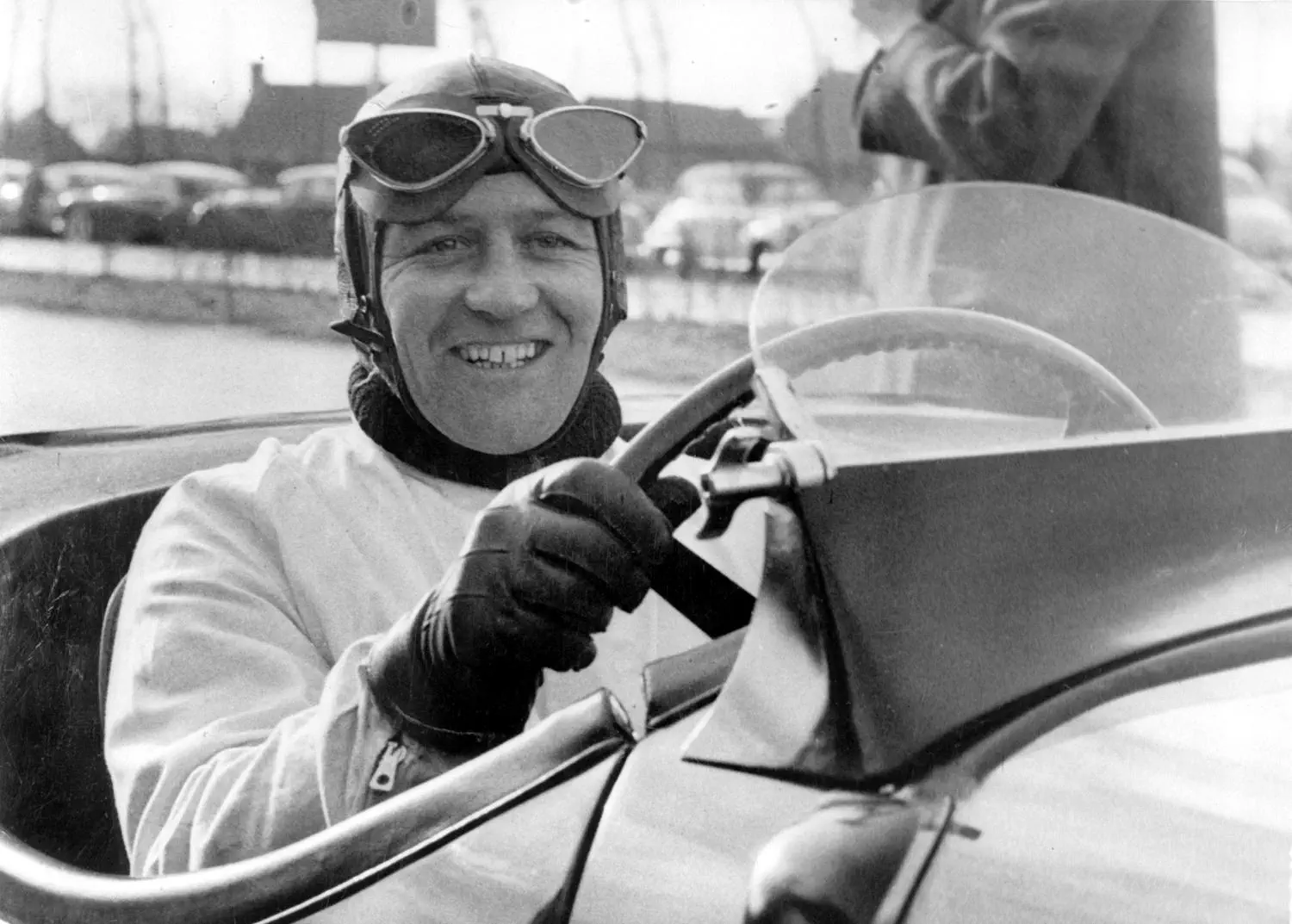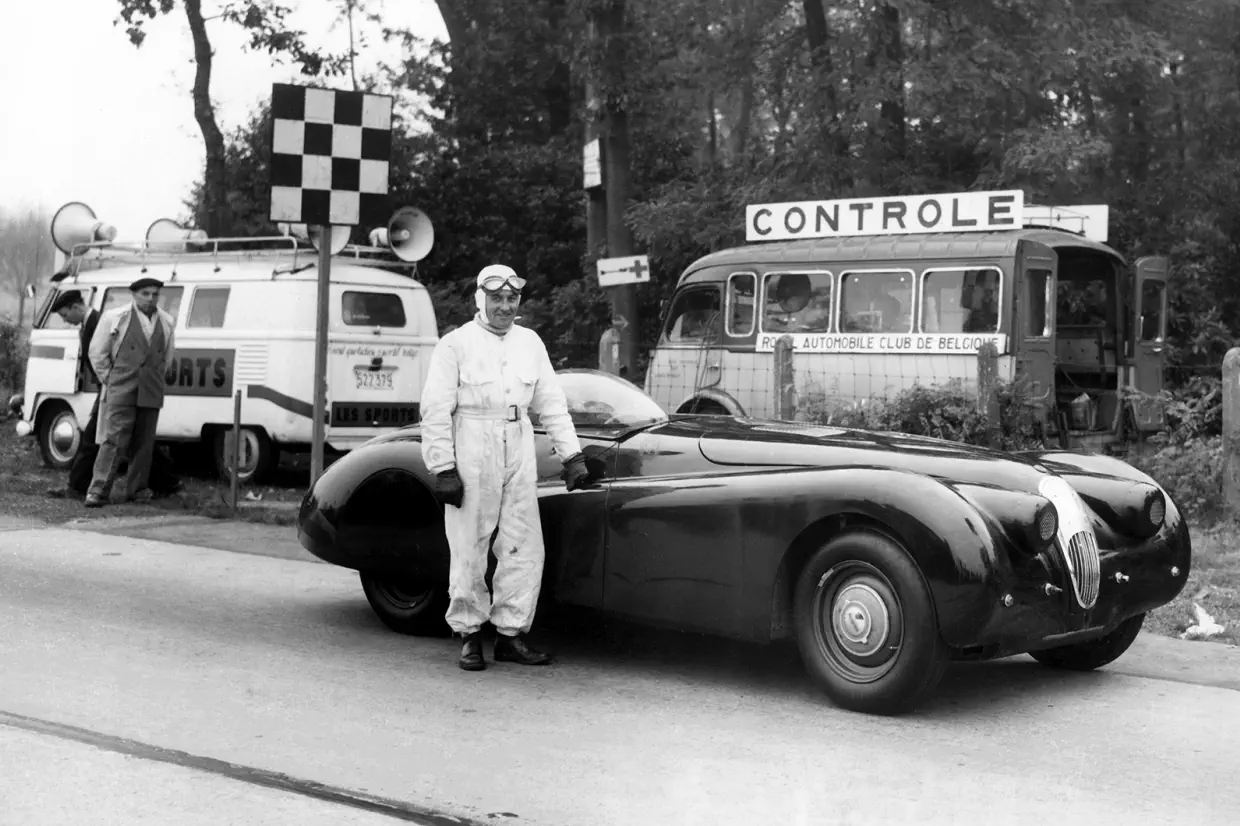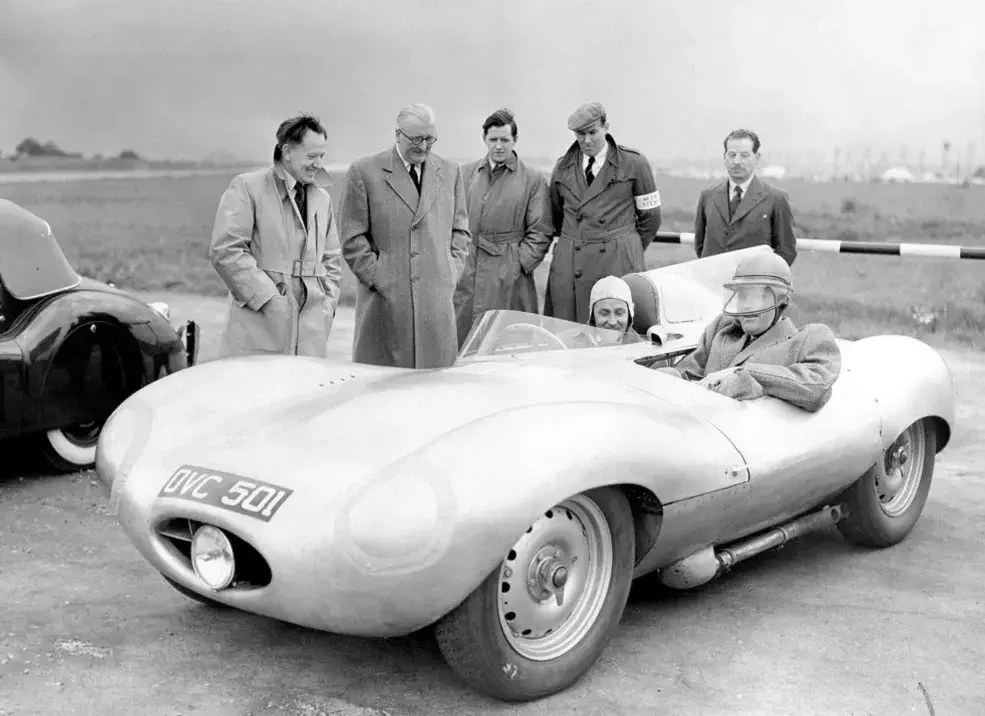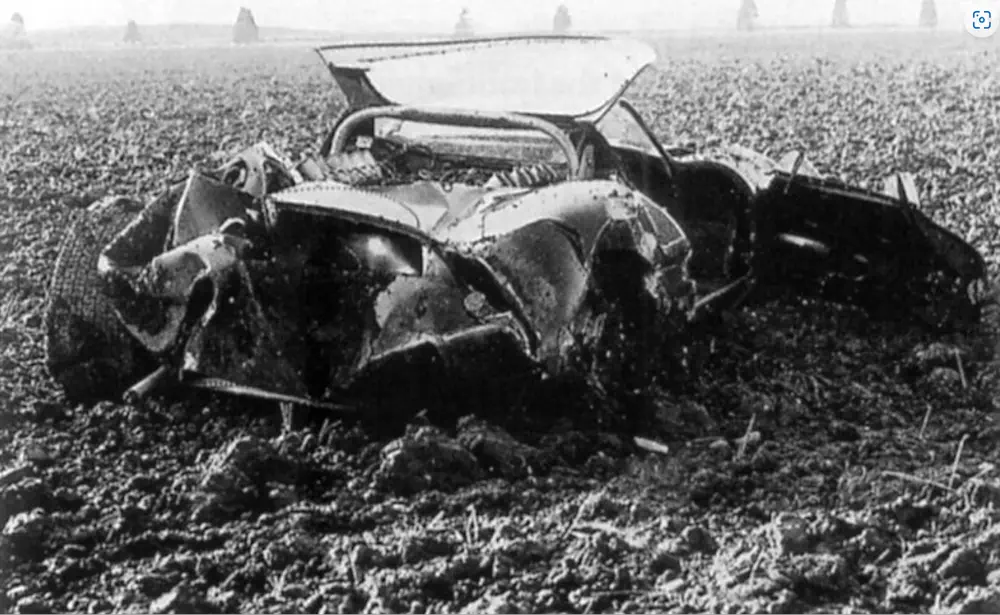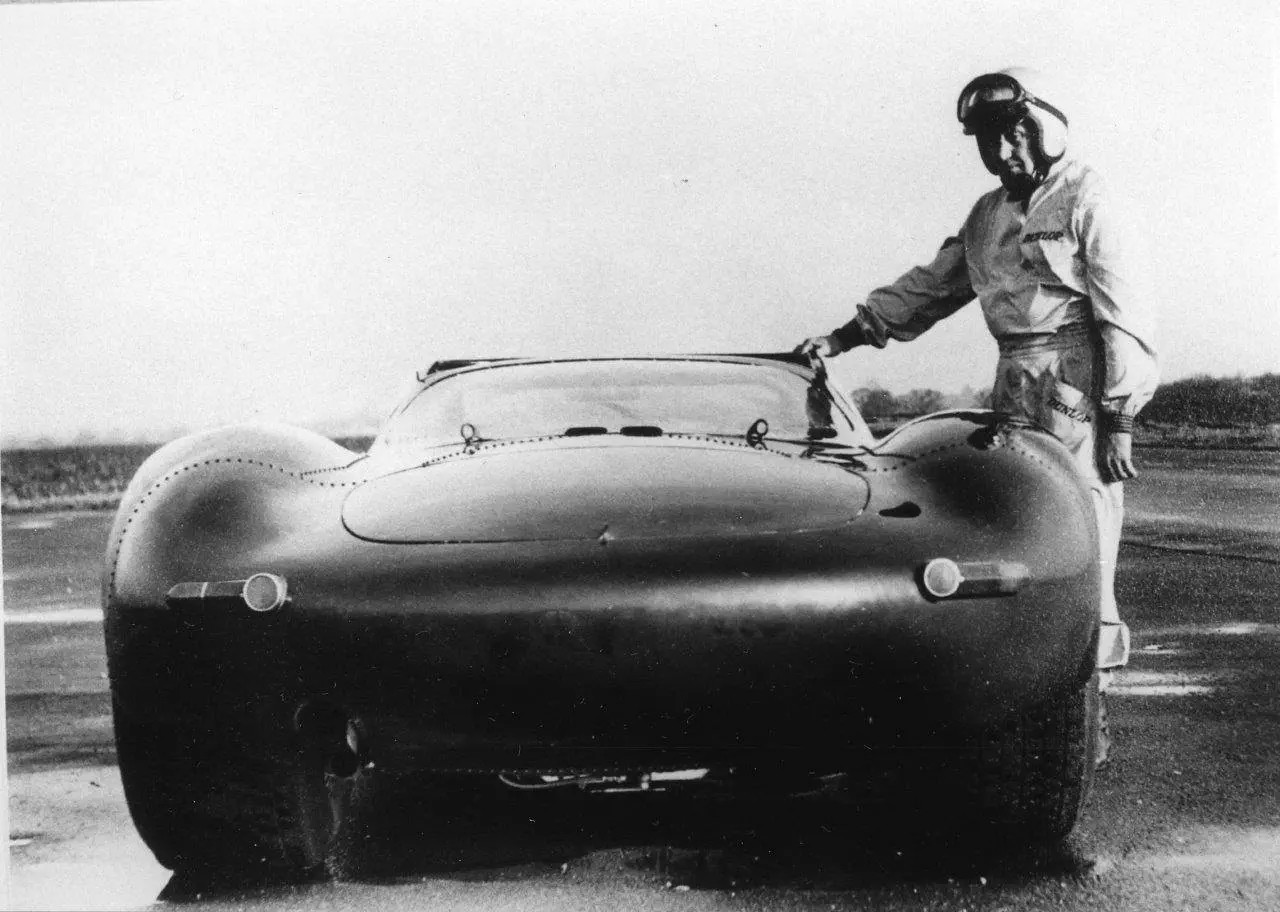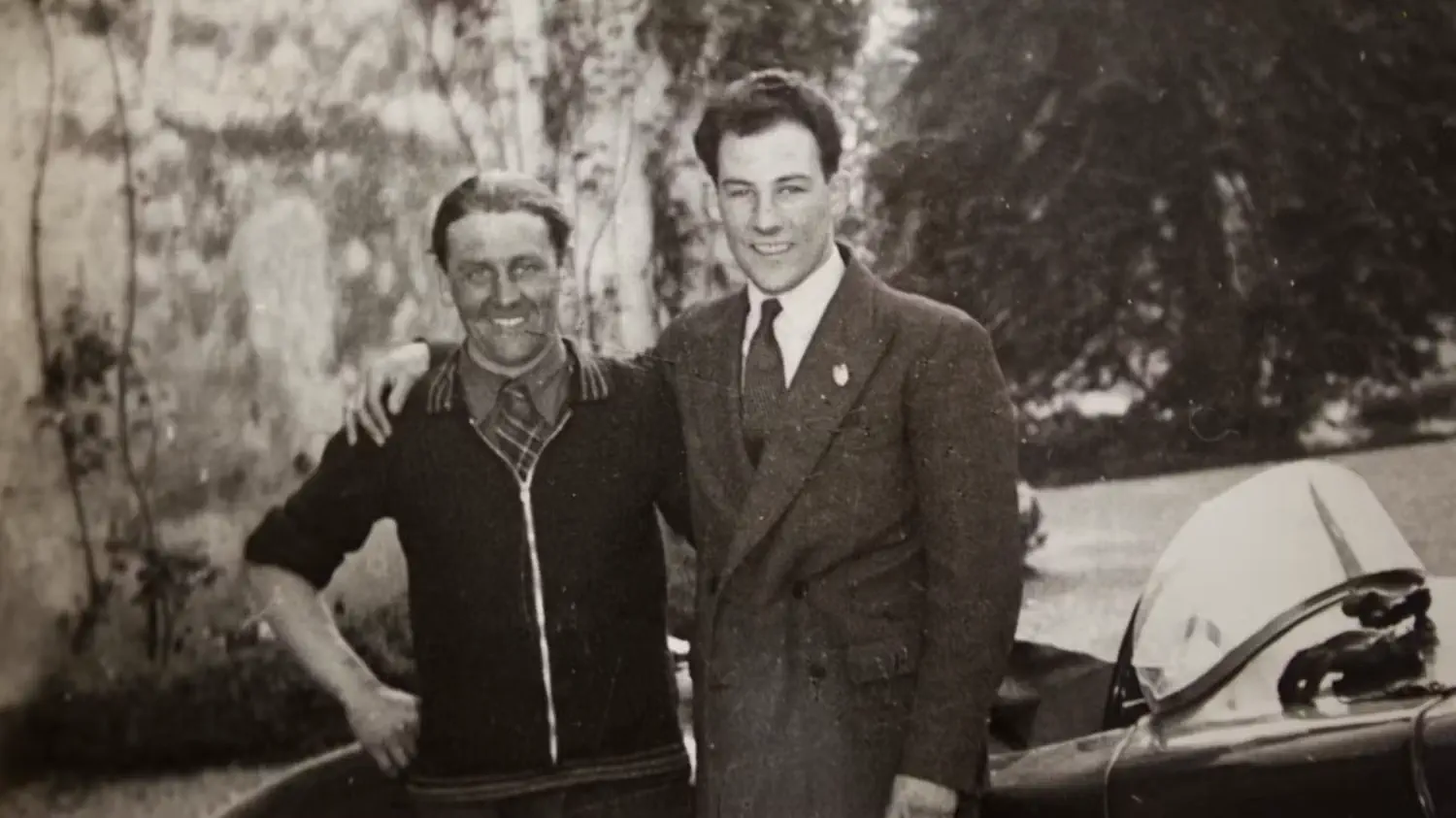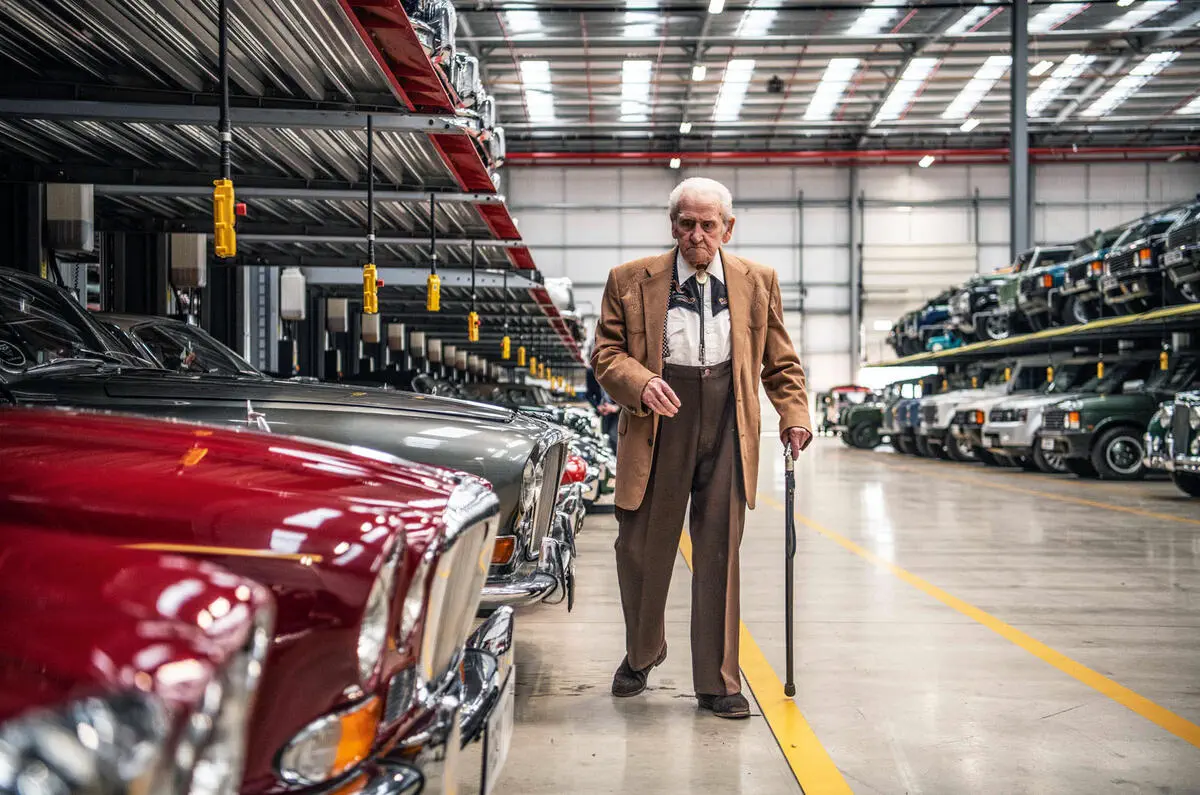Norman Dewis: The Indestructible Test Driver Who Made Jaguars Stop

Norman Dewis was the man Jaguar trusted with their most precious secrets, their wildest experiments, and their most dangerous prototypes. He was Britain's greatest test driver, a man who understood that a truly great car wasn't finished until someone had very nearly been killed in it. And for 33 years, he was that man.
Dewis possessed that particular British combination of technical brilliance and casual disregard for personal safety that built an empire and created the legend of Jaguar excellence. Sir William Lyons famously refused to let him race professionally, declaring him "too valuable" to risk. He developed twenty-five different Jaguars, from the C-Type that conquered Le Mans to the E-Type that conquered the world, and did it all with the methodical precision of someone conducting a particularly hazardous laboratory experiment rather than reshaping automotive history.
From Tragedy to Opportunity
Born in Coventry on 3 August 1920, Norman Dewis might have become an artist if fate hadn't intervened with typically brutal efficiency. He won a scholarship to art school, a ticket out of working-class Coventry and into a more refined world. Then his father died suddenly when Norman was fourteen, and artistic aspirations became the luxury of families who didn't need their children to pay the rent.
The scholarship went unused. Instead, young Norman became the family breadwinner, starting as a grocer's delivery boy before gravitating towards the Humber factory that sat conveniently on his street. It was the 1930s, when motor manufacturing offered working-class boys the closest thing to a technical education they were likely to get. At fifteen, he secured an apprenticeship with Armstrong Siddeley, learning the fundamentals of engineering that would later serve him so well when testing cars at their absolute limits.
The war interrupted his automotive education with six years in the RAF, where he served as a gunner in the centre turret of Bristol Blenheim bombers. Flying through flak-filled skies over occupied Europe probably seemed like excellent preparation for a career that would later involve hurling prototype Jaguars around test tracks at unconscionable speeds. After demobilisation, he joined Lea-Francis, makers of lovely but commercially doomed sports cars, before Bill Heynes at Jaguar spotted his potential and made the phone call that would change both their lives.
The Man Who Taught Cars to Stop
In 1952, Dewis arrived at Jaguar just as the company embarked on the most significant safety innovation in automotive history: the development of disc brakes. Working closely with Dunlop, he became the living laboratory for a technology that would eventually save millions of lives. The story began with Jaguar's racing ambitions and a simple engineering problem: drum brakes that faded to uselessness in long races, forcing drivers to choose between slowing down or being stopped by a tree.
The solution came from aeroplanes, which had used disc brakes since the late 1930s. Dewis spent months at MIRA and Perton airfield driving the first disc-equipped C-Type, methodically documenting every failure mode. Early brake pads disintegrated after a few laps. Brake fluid boiled at high temperatures, sending the pedal straight to the floor when approaching fast corners. Each failure meant redesigning components, fitting new parts, and starting the entire testing cycle again.
This systematic destruction was the British approach to high-performance development: why spend a fortune on complex calculations and lab tests when you could just pay a brave man from Coventry to find the breaking point for you?
Within a few years, disc brakes would migrate from racing to road cars, with Jaguar offering them as standard equipment long before competitors caught up. Dewis had helped pioneer the single most important safety advance in automotive history, though he typically downplayed his role with the modest observation that "we were just doing our jobs."
Speed Record on Belgian Motorways
In 1953, Jaguar decided they wanted the production car speed record back from Mercedes. This required modifying an XK120 with a full-length undertray and perspex canopy, then finding someone sufficiently brave to drive it flat-out down a Jabbeke motorway.
Malcolm Sayer had calculated the car would start to lift off at 160mph. Dewis was literally bolted into a vehicle, sitting on a cushion because they'd removed the seat to fit under the canopy. The fact that a man could achieve 172.412mph while perched on a pillow demonstrates remarkable driver confidence and breathtaking optimism about the laws of physics.
The Crash
The most dramatic chapter in Dewis's career came in January 1971, when he was testing Jaguar's experimental XJ13 at the MIRA proving ground. The mid-engined V12 prototype represented Jaguar's stillborn Formula One ambitions, a car that might have challenged Ferrari and Lotus if corporate priorities hadn't shifted elsewhere. Dewis had been granted weekend access to develop the car privately, away from prying eyes and nervous management.
At 135mph on MIRA's high-speed banking, the rear wheel just disintegrated. The XJ13 spun down the banking, dug into the infield, and performed two complete barrel rolls before landing upright. Dewis, who wasn't wearing a safety harness, somehow managed to wedge himself under the scuttle during the tumbling and emerged from the wreckage with nothing more than bruises. "I know she caught me out, but she's still a lovely thing," he said afterwards, displaying the sort of philosophical attitude towards vehicular mayhem that characterised his entire career.
He drove home, told his wife Nan he needed an early night after "a busy day," and thought nothing more of it until the Coventry Evening Telegraph's front page announced: "Mr Norman Dewis crashes experimental vehicle at 140mph."
The Corporate Memory Bank
Dewis retired from full-time testing in 1985 but carried on working for Jaguar. He became the company's unofficial repository of institutional knowledge, a walking encyclopedia of engineering decisions, design compromises, and corporate folklore. At classic car events worldwide, he was the man everyone wanted to speak to not just for his stories, but for his understanding of why certain engineering choices had been made decades earlier.
In 2014, Dewis received an OBE for services to the motor industry, belated recognition for a career that had shaped automotive safety and performance. He had one final ambition: to celebrate his 100th birthday by driving a Jaguar at 100mph. It would have been a fitting tribute to a man who had spent his life proving that the only way to understand a car's true potential was to push it beyond apparent reason.
Norman Dewis died on 8 June 2019, aged ninety-nine, just seven weeks before his centenary. His promised 100mph birthday drive would remain unfulfilled, but his legacy was secure. Every time you press the brake pedal, you benefit from technology he helped develop. Every Jaguar that achieves its claimed performance figures does so because he tested it properly. He was Britain's greatest test driver, a man who understood that excellence requires someone willing to explore the dangerous spaces between the possible and the inadvisable.

